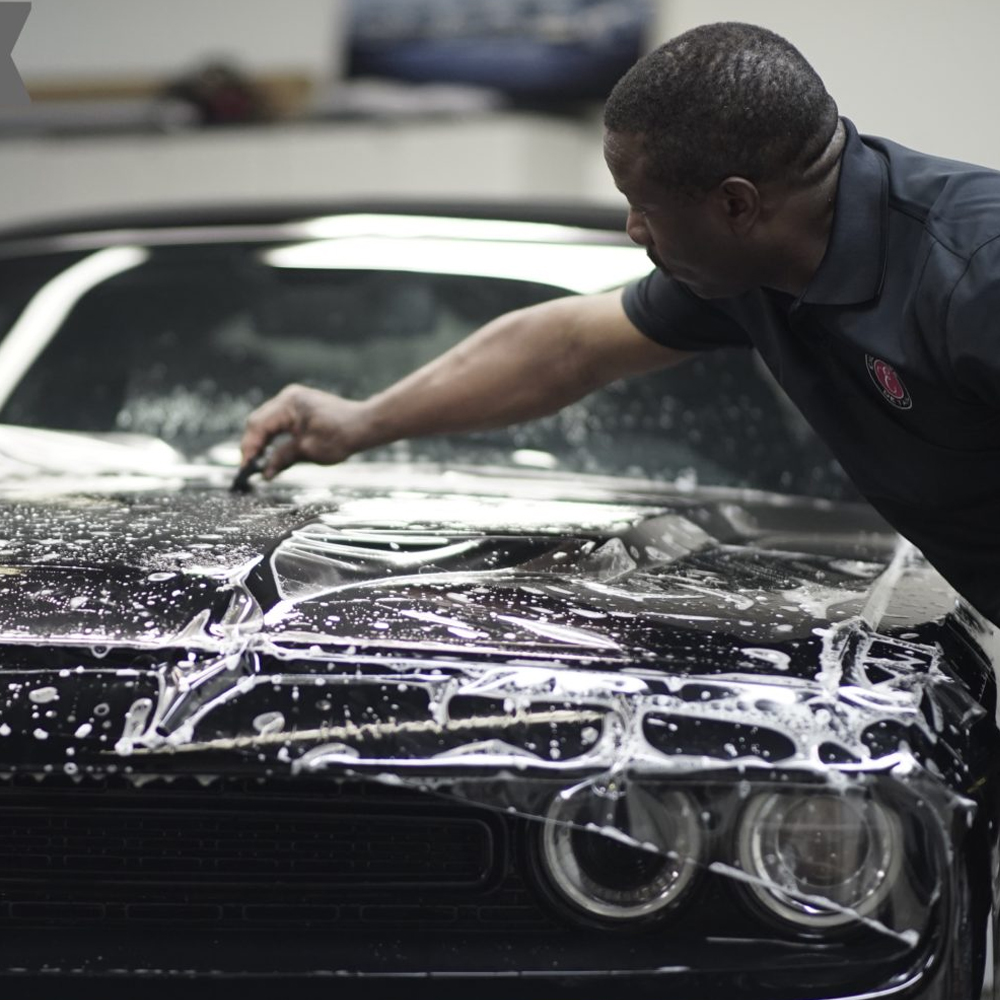
Know the Limitations of Clear-coat Paint Finishes
Nothing draws the eye like the dazzle and shine of wonderfully kept car paint. To achieve this effect, however, a lot of work has to go into car paint protection, whether it is handled by the vehicle owner or a professional auto detailer. Over the years numerous paint care products and detailing methods have been introduced, but not all have proven to be effective. But there are some we consider “classics” that no vehicle owner should forego.
Use a clay bar
Car shampoo and water is no longer sufficient to get rid of contaminants that cling to the paint. The solution is using a clay bar. This wonderful auto detailing product was first invented in Japan in the 1980s. A clay bar is a resin that has a lot of elasticity. Its texture is similar to that of play-doh (play-doh is not a substitute for automotive clay!) Using this product is very easy but time consuming. The first step is to wash the paint using a good quality auto detailing shampoo to get rid of dirt and grime as much as possible. Claying is the next step. Many clay bars in the market come with a lubricant but if it does not, there are products that you can purchase separately. It is extremely important to lubricate the surface first to enable the clay to glide easily across the surface. Clay bars also come in different colors to indicate different grades of abrasiveness. As you work in sections, you will notice the bar getting dirtier and grimier because it is grabbing the contaminants off the paint.
Polish the paint
Polishing is one of the most misunderstood paint care procedures and as a result many individuals skip this important step. Polish is an abrasive compound, which, when worked into the paint using the hand or a polisher, shaves off imperfections of the paint. It levels out the surface and makes it smooth, thereby preparing it for the next step of applying wax or paint sealant. If you wax without polishing the surface first, not only will the paint look dull, but you will also notice that the wax layer will wear off quicker than usual. So ultimately it is a huge waste of your time and resources. Because polish is abrasive as mentioned above, it is important to master polishing techniques especially if you are using a rotary buffer, or you risk burning right through the paint.
Waxing and applying paint sealant
Washing, claying and polishing are steps that prepare the surface for the application of wax or paint sealant or both. These products seal in all the hard work you did previously and protect the paint by bearing the brunt of harsh contaminants, sun damage, water spots and scratches and swirls. It will also give the paint that shine you always wanted. The main difference between wax and sealant is that the former is a natural substance and the latter is a synthetic product. The type of shine each product gives is also different, but ultimately they are both great at paint protection. As mentioned above you can use either product, or wax first and then sealant for extra protection. If you want to go a step further, applying glass coating is the ultimate paint protection procedure. It will protect your car for a minimum of one year without the need for waxing or applying sealant.
Prevent sun damage
It is not possible to completely evade the harsh UV rays of the sun, but there are steps that you can take to reduce its destructive effects. A sun damaged paint is easily recognizable by its dull, faded, and hazed appearance. If the damage goes too far your car might need a completely new paint job which is very expensive. You can prevent sun damage by parking the car inside a garage or using a car cover. Waxing also provides protection from sun damage. Washing the car frequently is another preventive measure you can take.
